A Lesson in Taro
When a contingent of Maui Visitors and Convention Bureau officials visit the Bay Area, they always bring a delicious taste of the islands.
Last week, they brought something extra special — a lesson in taro.
Invited media, including myself, were treated to a 6-course lunch at Heritage Restaurant and Bar in San Francisco in which almost every dish featured taro (or kalo, as the Hawaiians call it) in some way, shape or form.
As Kawika Freitas, director of public and cultural relations for Old Lahaina Lu’au and Hoaloha Farms, explains, “We want to make kalo the next Brussels sprouts.”
With an even bigger grin, he added: “Poi to the world!”
Indeed, if you only know taro from the pounded luau staple that often gets a bad rap by tourists, then you don’t really know taro.
It was a sacred ingredient to ancient Hawaiians. Legend has it that the gods who created heaven and earth, had a still-born child. From the spot where they buried their child, the first kalo plant sprouted, helping to nourish and sustain Hawaiians.
The root veg is high in dietary fiber and antioxidants, including Vitamins A and C. But it’s also more caloric than potatoes, with 100 grams containing 112 calories.
It’s also way more versatile than you would think, as evidenced by this lunch at Heritage Restaurant, housed in a 1907 building that at one time was a post office with horse and carriage mail wagons, then a potato market in 1918, then a candy and ice cream shop in 1921. How apropos to have a taro feast in a former store that was once devoted to potatoes, right?
Chef-Owner Cameron Lewark of Heritage was joined in the kitchen by Maui Chef Kaipo Nakata of the DK Restaurant Group.
Lunch began with a beautiful presentation of lomi lomi salmon, coconut puree, the tang of pickled green strawberries, and a kick of chilies.
Taro arrived in classic poke, with cubes of ahi and slivers of Maui onion dressed with ginger soy sauce, along with pickled kohlrabi. The fish was mounded over poi. As Freitas explained, once water is added to pounded poi, fermentation starts. That’s why some people prefer their poi super fresh, so that it has just it natural sweet, starchy flavor without any trace of funk, while others prefer it more fermented because it gains greater complexity. This one was as fresh as it gets — creamy, sticky, and tame.
The kalo salad was a surprise in that it was warm, with two different types of taro cubed and fried, then strewn over the plate like croutons. A dusting of Asiago cheese, a relish of scallions, and a sunnyside-up quail egg gave this the air of a fun breakfast dish.
Miso-glazed salmon is as classic Hawaiian as it gets with its sweet, fermented and umami powerhouse of flavors. A tangle of chewy kalo soba, dressed with yuzu ponzu sauce lay underneath.
Taro was then used not only to crust branzino, giving crispiness and more dimension to the skin, but also incorporated into a mushroom hash. A coconut-taro leaf puree looked like pesto and tasted almost as heavenly as dessert.
Speaking of which, the first dessert was a small cube of sweet kulolo, a sticky, mochi-like confection made by steaming grated kalo with coconut milk. It was served warm and was total comfort.
Lastly, there was a deconstructed pie with shards of pastry, toasted coconut, dollops of vibrant sweet-tart passion fruit curd.
With that, I got schooled in kalo — and it was one delicious lesson.


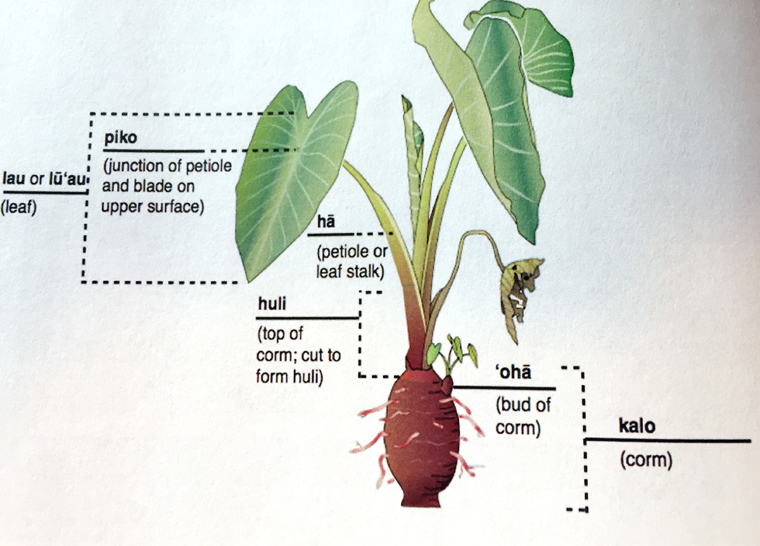
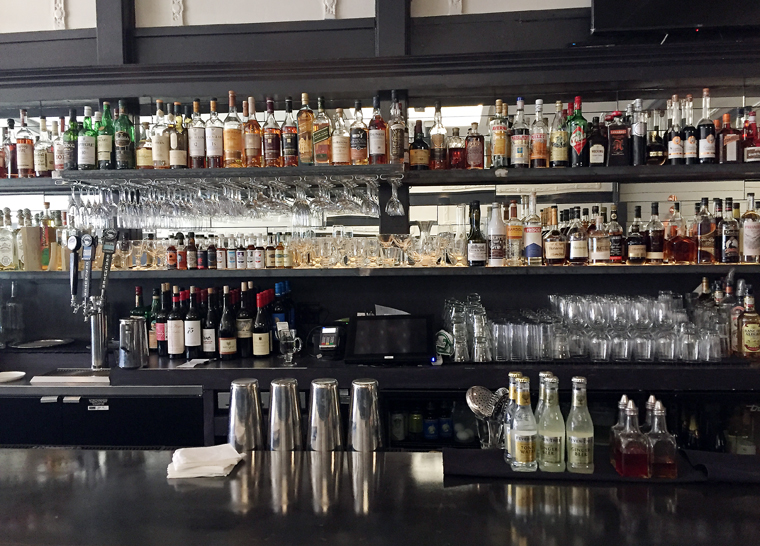
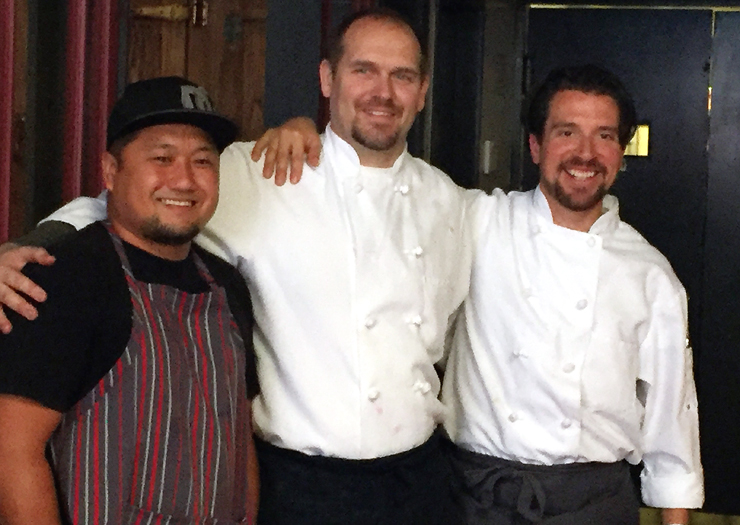
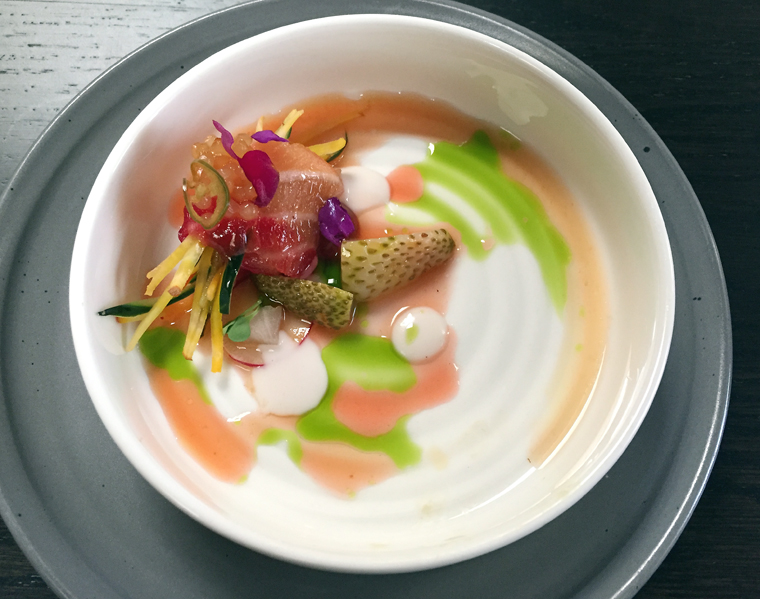
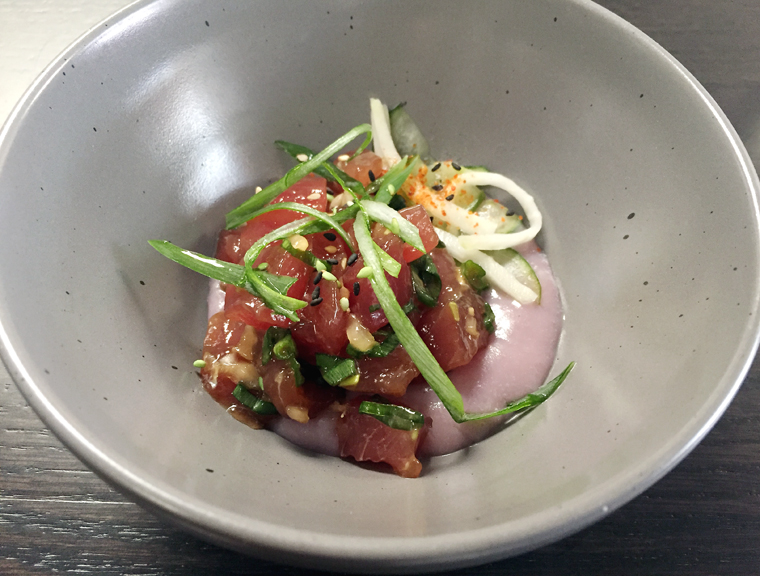
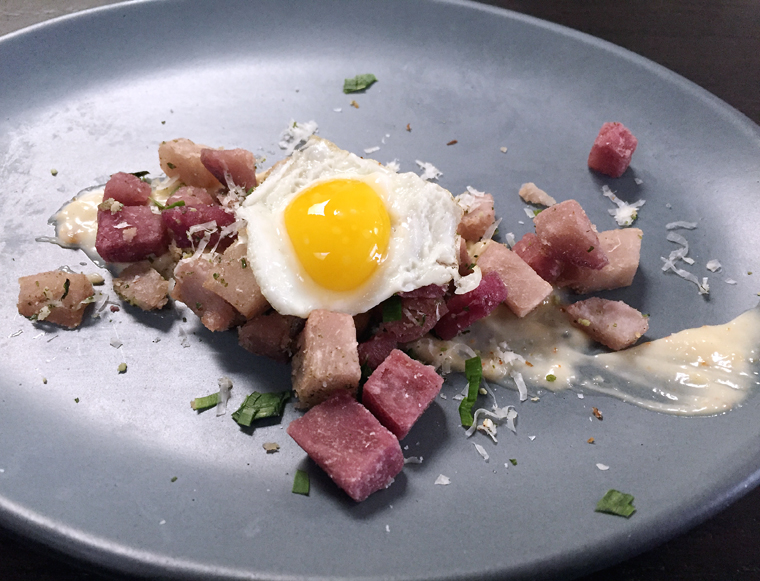
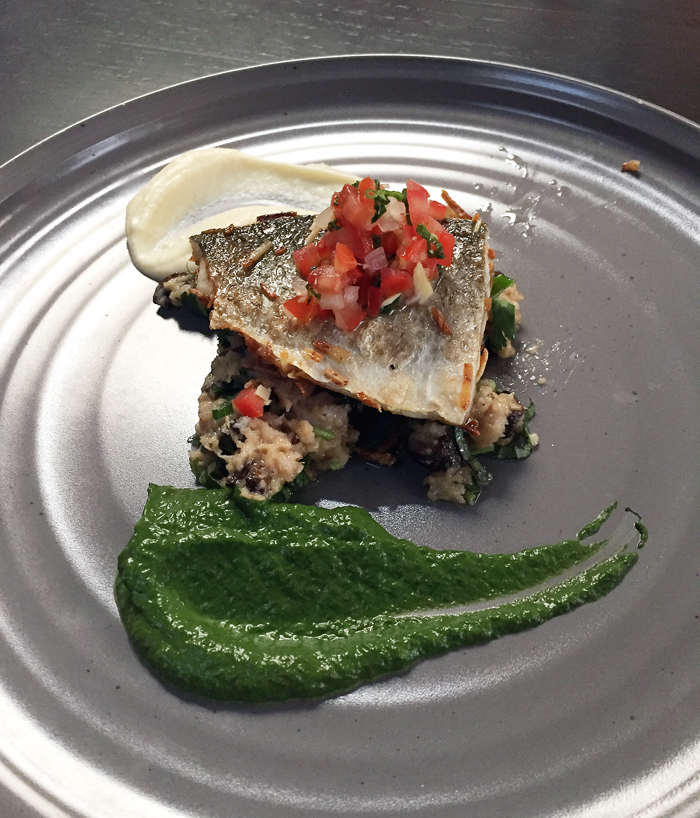
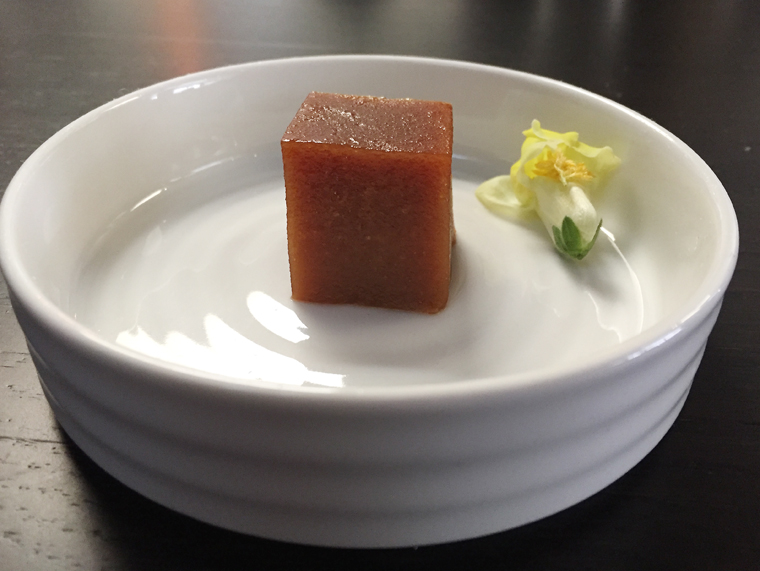
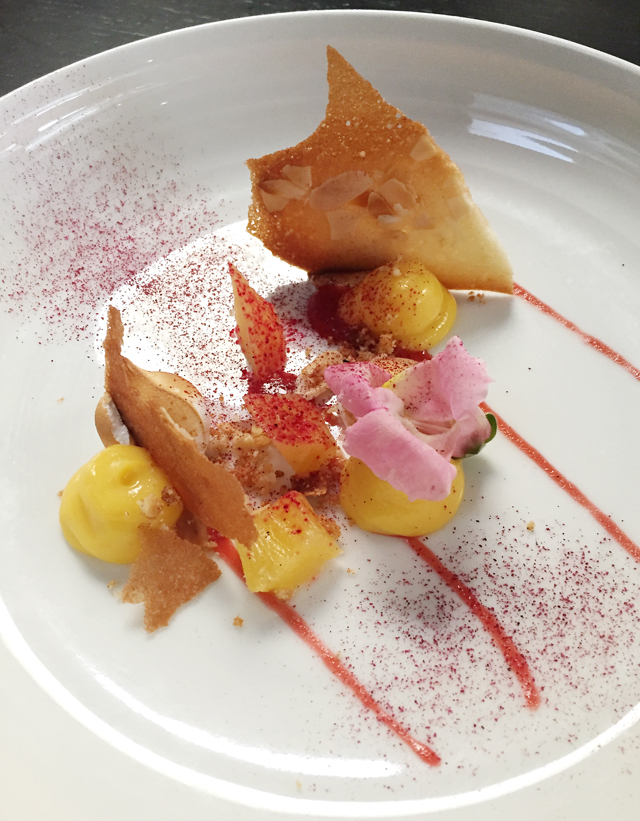
That’s a pretty salmon presentation!
Poi to the world! Love this.